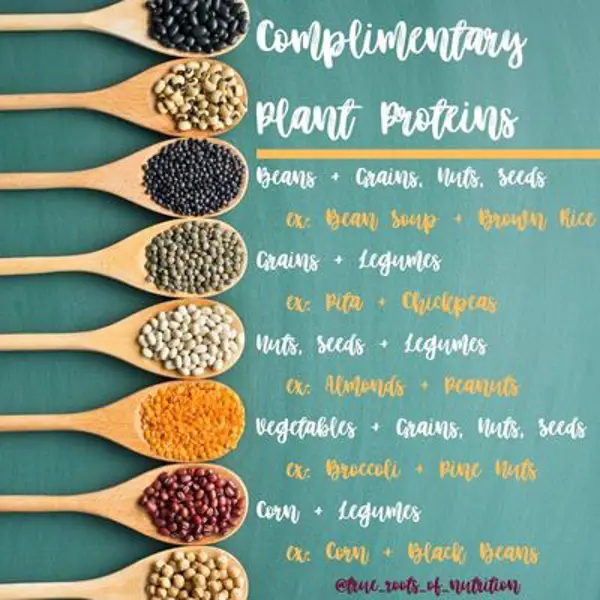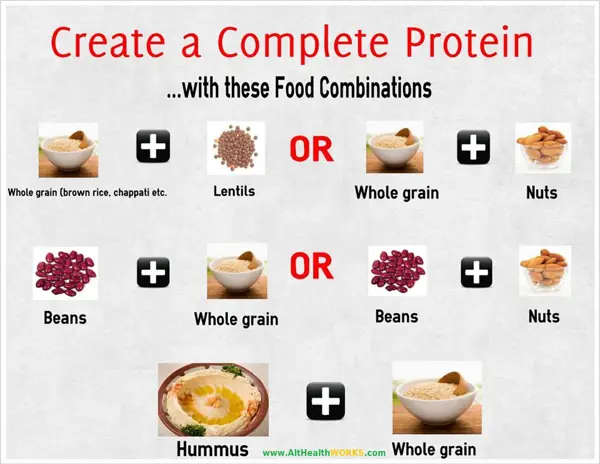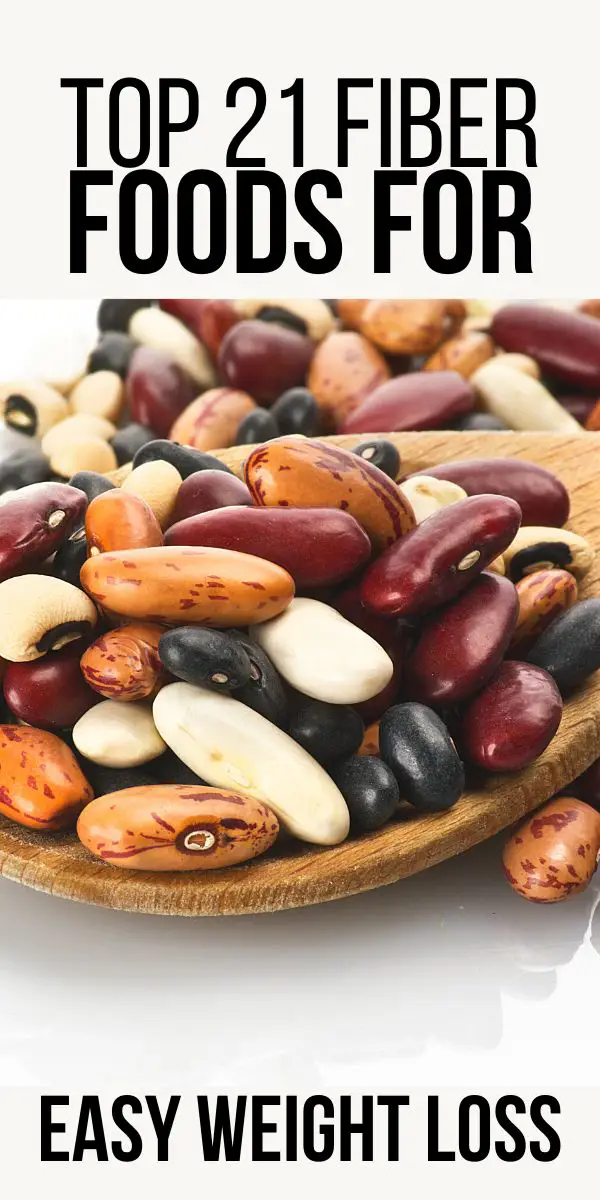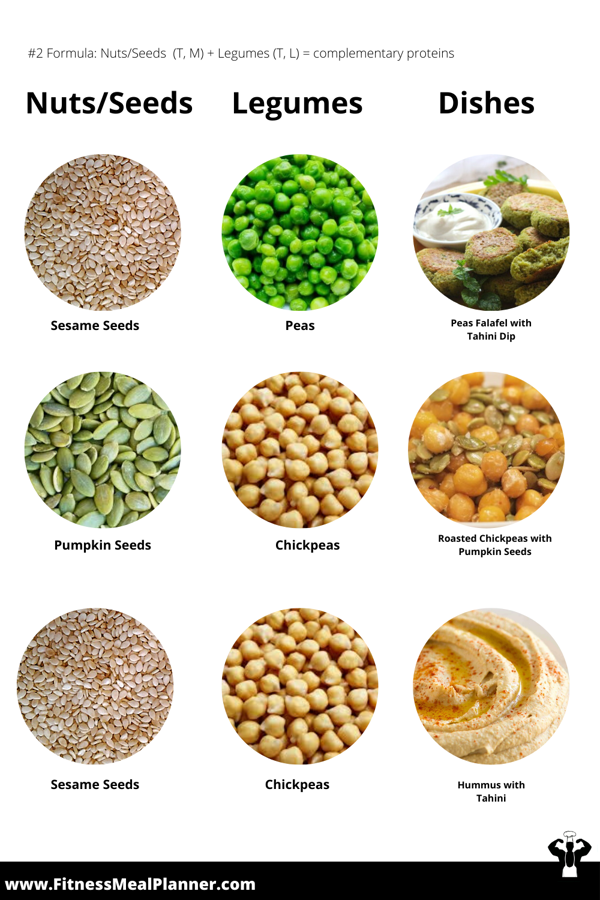Complementary protein nutrition is an essential aspect of maintaining a balanced and healthy diet. With this quizlet, you can learn more about the importance of pairing different plant-based proteins to ensure you get all the necessary amino acids your body needs.
Table of Contents
- Benefits of Complementary Protein Nutrition
- Sources of Complementary Proteins
- Effective Pairing Strategies
- Delicious Complementary Protein Recipes
- Common Challenges and Solutions
- Quiz: Test Your Knowledge
- Additional Resources
1. Benefits of Complementary Protein Nutrition
Learn about the advantages of combining different plant-based proteins to ensure a complete amino acid profile in your diet.
2. Sources of Complementary Proteins
Explore various plant-based protein sources that can be combined to create a complete protein meal.
Complementary proteins are a key component of a balanced diet, providing the essential amino acids that our bodies need to function properly. There are a variety of sources of complementary proteins that can be easily incorporated into your meals. Some examples include:
1. Beans and rice: Combining beans, such as black beans or kidney beans, with rice creates a complete protein source that is both filling and nutritious.
2. Hummus and whole grain pita: Hummus, made from chickpeas, is a great source of protein when paired with whole grain pita bread for a delicious and satisfying snack.
3. Quinoa and vegetables: Quinoa is a complete protein on its own, but pairing it with a variety of vegetables, such as broccoli or bell peppers, can add extra nutrients and flavor to your meal.
By incorporating these sources of complementary proteins into your diet, you can ensure that you are meeting your body's nutritional needs and maintaining overall health.

3. Effective Pairing Strategies
Discover tips and tricks for pairing complementary proteins to maximize nutrient absorption and support overall health.
Complementary proteins are two or more proteins that, when combined, provide all of the essential amino acids that the body needs. This can be especially important for vegetarians and vegans who may not get all of the essential amino acids from a single plant-based protein source.
There are several effective pairing strategies that can help ensure you are getting all of the essential amino acids in your diet:
- Pairing grains with legumes: Legumes are rich in lysine but low in methionine, while grains are low in lysine but rich in methionine. By pairing the two together, you can create a complete protein source.
- Pairing nuts and seeds with grains: Nuts and seeds are high in methionine but low in lysine, while grains are high in lysine but low in methionine. Combining the two can create a complete protein source.
- Pairing beans with rice: Beans are high in lysine but low in methionine, while rice is low in lysine but high in methionine. Together, they form a complete protein source.
By incorporating these pairing strategies into your diet, you can ensure you are getting all of the essential amino acids your body needs for optimal health.

4. Delicious Complementary Protein Recipes
Try out these tasty recipes that incorporate complementary proteins for a nutritious and satisfying meal.
Complementary proteins are two or more incomplete protein sources that together provide all the essential amino acids needed by the body. By combining different plant-based proteins, you can create nutritious and delicious meals. Here are four complementary protein recipes to try:
1. Quinoa and Black Beans
Combine quinoa, a complete protein, with black beans to create a protein-packed dish. Add in some diced vegetables, herbs, and spices for flavor.
2. Lentil Salad with Sunflower Seeds
Mix cooked lentils with sunflower seeds for a tasty and satisfying salad. Add in some leafy greens, tomatoes, and a vinaigrette dressing for a nutritious meal.
3. Chickpea and Brown Rice Bowl
Top cooked brown rice with roasted chickpeas, chopped avocado, and salsa for a filling and flavorful bowl. This dish is rich in fiber and protein.
4. Tofu Stir-Fry with Edamame
Sauté tofu and edamame with mixed vegetables and soy sauce for a quick and easy stir-fry. Serve over brown rice or quinoa for a complete meal.
These recipes are not only delicious but also provide a balanced mix of complementary proteins. Try them out and enjoy a nutritious and satisfying meal!

5. Common Challenges and Solutions
Learn how to overcome obstacles and find creative solutions when incorporating complementary proteins into your diet.
- Challenge: Limited protein sources
Solution: Combine plant-based proteins such as beans, lentils, and quinoa with grains like rice or wheat to create complete protein meals. - Challenge: Difficulty in balancing amino acids
Solution: Pairing foods with complementary amino acid profiles, such as beans and rice, can help ensure you get all the essential amino acids your body needs. - Challenge: Lack of variety in protein choices
Solution: Experiment with different plant-based proteins, such as nuts, seeds, and soy products, to increase the variety in your diet and ensure you're getting all essential nutrients. - Challenge: Digestive issues with certain protein sources
Solution: If certain protein sources cause digestive discomfort, try incorporating enzymes or probiotics into your diet to help improve digestion and absorption of nutrients. - Challenge: Meeting increased protein needs for athletes or active individuals
Solution: Incorporate protein-rich foods into every meal and snack, such as Greek yogurt, tofu, or lean meats, to ensure you're meeting your increased protein needs for optimal performance and recovery.

6. Quiz: Test Your Knowledge
Put your knowledge to the test with this interactive quiz that covers the key concepts of complementary protein nutrition.
Welcome to the quiz where you can test your knowledge on complementary protein nutrition! This quiz will assess your understanding of how different plant-based foods can be combined to form complete proteins. Let's get started!
Instructions:
- This quiz contains 10 multiple choice questions.
- Choose the best answer for each question.
- At the end of the quiz, you will receive your score and feedback on your answers.
Good luck!

7. Additional Resources
Find more information, recipes, and tips for incorporating complementary proteins into your daily meals.
In addition to the information provided in this quizlet on complementary protein nutrition, there are a variety of additional resources available to help you further understand this important concept.
1. Websites: Explore websites such as the USDA's MyPlate website or the World Health Organization's Nutrition website for comprehensive information on protein and nutrition.
2. Books: Look for books like "The Plant-Powered Diet" by Sharon Palmer or "Proteinaholic" by Garth Davis to delve deeper into the science behind protein and how it relates to overall health.
3. Online courses: Consider taking an online course on nutrition or plant-based eating to expand your knowledge on complementary protein sources.
4. Podcasts: Listen to podcasts like "The Nutrition Diva's Quick and Dirty Tips" or "The Plant Proof Podcast" for informative discussions on protein and nutrition.
5. Nutritionists and Dietitians: Consult with a registered dietitian or nutritionist for personalized guidance on incorporating complementary proteins into your diet.
6. Food journals and apps: Use tools like MyFitnessPal or Fooducate to track your protein intake and discover new ways to combine complementary protein sources.
7. Cooking classes: Attend cooking classes focused on plant-based cooking to learn how to prepare delicious meals that incorporate complementary proteins.
By utilizing these additional resources, you can further enhance your understanding of complementary protein nutrition and make informed decisions about your dietary choices.

Key Takeaways
- Complementary protein nutrition involves combining different plant-based proteins to create a complete amino acid profile.
- Pairing complementary proteins can enhance nutrient absorption and support overall health.
- Delicious recipes incorporating complementary proteins can help you maintain a balanced and healthy diet.
Frequently Asked Questions
- Q: Can I get all the necessary amino acids from plant-based proteins?
- A: By combining different plant-based proteins, you can ensure you get all the essential amino acids your body needs.
- Q: What are some examples of complementary protein sources?
- A: Examples include beans and rice, peanut butter on whole grain bread, and tofu with quinoa.
- Q: How can I incorporate complementary proteins into my meals?
- A: Try experimenting with different recipes and pairing strategies to create balanced and nutritious meals.



Recent Comments